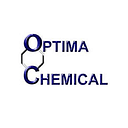Growth Characteristics and Conformality of ALD Precursors
ALD is a self-limited film growth technique that produces (sub) monolayers one at a time by exposing the developing film to chemical precursors in alternating fashion.
For the production of Al2O3 insulator films and luminescent ZnS and electroluminescent flat-panel displays, ALD was developed in the 1970s and again in the 1980s. The ALD precursor manufacturing method didn’t become successful on the market until the 1990s when device sizes shrank and high-k oxides were necessary for microelectronics.
ALD has a number of benefits over other film deposition methods like electrochemical deposition, chemical vapor deposition (CVD), and physical vapor deposition (PVD, often known as evaporation or sputter deposition). The capacity to place conformally into high AR (Aspect Ratio) structures is the most significant advantage.
ALD Growth Characteristics
The amount of material deposited increases linearly as the quantity of ALD cycles increases in the ideal ALD process. The quantity of material formed (or the equivalent increase in thickness) per ALD cycle is the standard definition of GPC (Growth Per Cycle).
Although GPC is a useful concept that is frequently used in everyday laboratory communication as well as in the literature, it is important to understand that the “apparent” GPC value is instead determined by the number of chemisorption sites on the development surface, which will depend on the reactivity, the number of accessible surface sites, and even surface morphology. This does not in any way reflect the chemical reaction kinetics during the film deposition.
At the beginning of the ALD process, GPC is substrate-dependent, and it takes a specific number of cycles to reach a steady-state GPC value. The reason for this is that the biochemical sites on the top of the as-grown material may not be as reactive as the biochemical sites on the underlying substrate.
Conformality of ALD Processes
In the quickly expanding field of nanotechnology, the deposition of homogeneous coatings into deep structures like trenches, holes, and (Nano) pores is becoming more crucial. ALD has the best conformality, or the most consistent thickness over 3D features at the micro-and nanoscale, of all thin-film growing processes.
Unlike flux-controlled deposition in processes like PVD and CVD, where the surface response is regulated by itself, the remarkable conformality of ALD precursors is a direct outcome of this. Instead of sequential pulses as in ALD, the growing film is typically exposed to simultaneous fluxes of precursor gas and reactant gas in CVD. The growth rate of the film is typically influenced by the local gas flux.
ALD is a potential method for creating precise, high-quality thin films at the atomic level, and it depends heavily on the precursor used to carry out the process. The lack of acceptable yttrium precursors for Y2O3 ALD has increased research interest in the quest for new or improved precursors.
Bottom Line
As an ALD precursor manufacturing firm, Optima Chemical has the infrastructure to turn ideas into finished goods and solutions. Our product line is based on technology that was developed through the production of organometallic chemistry. We value safety, service, and adaptability. Contact us for further inquiries.
